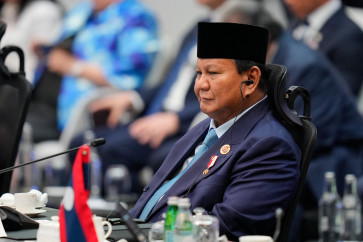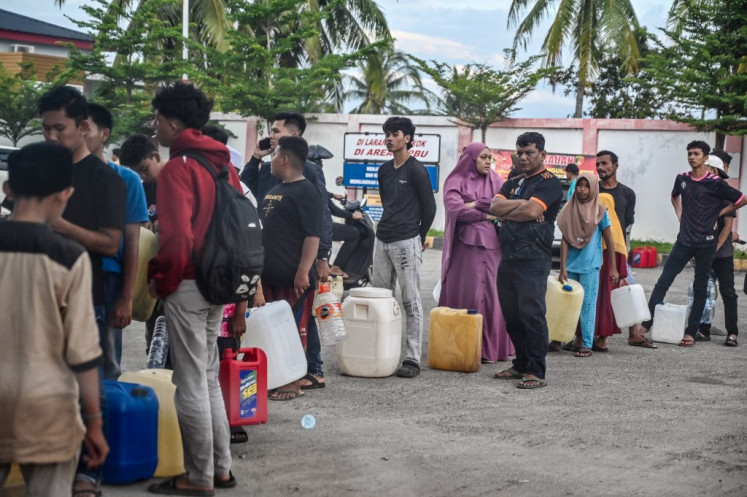Popular Reads
Top Results
Can't find what you're looking for?
View all search resultsPopular Reads
Top Results
Can't find what you're looking for?
View all search resultsGovernment recognizes customary forests
The government was due to begin mapping areas defined as customary and state forests following the Constitutional Courtâs ruling that rendered the governmentâs ownership of customary forests void, a top forestry official has said
Change text size
Gift Premium Articles
to Anyone
T
he government was due to begin mapping areas defined as customary and state forests following the Constitutional Court's ruling that rendered the government's ownership of customary forests void, a top forestry official has said.
On Thursday, the court decided to scrap the word 'state' from Article 1 of the 1999 Forestry Law, which says 'customary forests are state forests located in the areas of custom-based communities'.
The court also ruled that the government had to recognize indigenous communities' ownership of customary forests. 'Indigenous peoples have the right to own and exploit their customary forests to meet their daily needs,' Justice Muhammad Alim said on Thursday as quoted by Antara.
The annulment determined two types of forest status: state forests and public forests, with the latter also divided into two categories: customary forests and individual forests.
'As there is now a division between state forests and public forests, it will no longer be possible for public forests to be located within state forests or vice versa,' he said.
Forestry Ministry secretary-general Hadi Daryanto said the ministry had launched a program in 2010 to allocate 2.5 million hectares of forest areas as village forests, as a substitute for customary forests for indigenous people. The program is slated to be completed in 2014.
'With the annulment by the Constitutional Court, we will redefine the designated areas of village forests that are not located in state forests or private forests,' he said.
Hadi added that customary forest areas could not be regulated by the central government as, according to Article 67 of the Forestry Law, customary forests were to be regulated under bylaws.
'Article 67 of Law No. 41/1999 on forestry was not annulled by the MK [Constitutional Court] and currently, no regional administration has issued a bylaw on customary forests,' Hadi told The Jakarta Post.
He said it was the ministry's task to draft a government regulation to force local administrations to acknowledge customary forests in bylaws; something that has long been requested by several parties.
In March 2010, the Alliance of Indigenous Peoples (AMAN) filed a judicial review with the Constitutional Court, accusing the government of frequently violating the rights of indigenous peoples by taking over customary forests and turning them into state-controlled areas.
The state, according to AMAN, repeatedly granted concessions to businesspeople to establish plantations or construct mines while ignoring the rights of indigenous people.
Ade Cholik Mutaqin of the Participative Mapping Working Network (JKPP) said the government's challenge following the annulment would be in completing the map delineating borders between state forests, private forests and customary forests.
He added that the JKPP had drawn up a map, with assistance from indigenous people across the country, showing customary forest borders, which had been sent to the Environment Ministry. 'Our map shows that there are 2.6 million hectares of customary forest in Indonesia, with the largest area, 700,000 hectares, located in West Kalimantan and around 50,000 hectares in Papua,' Ade said.
He added, however, that the map did not yet include all areas in every province due to geographical challenges.










